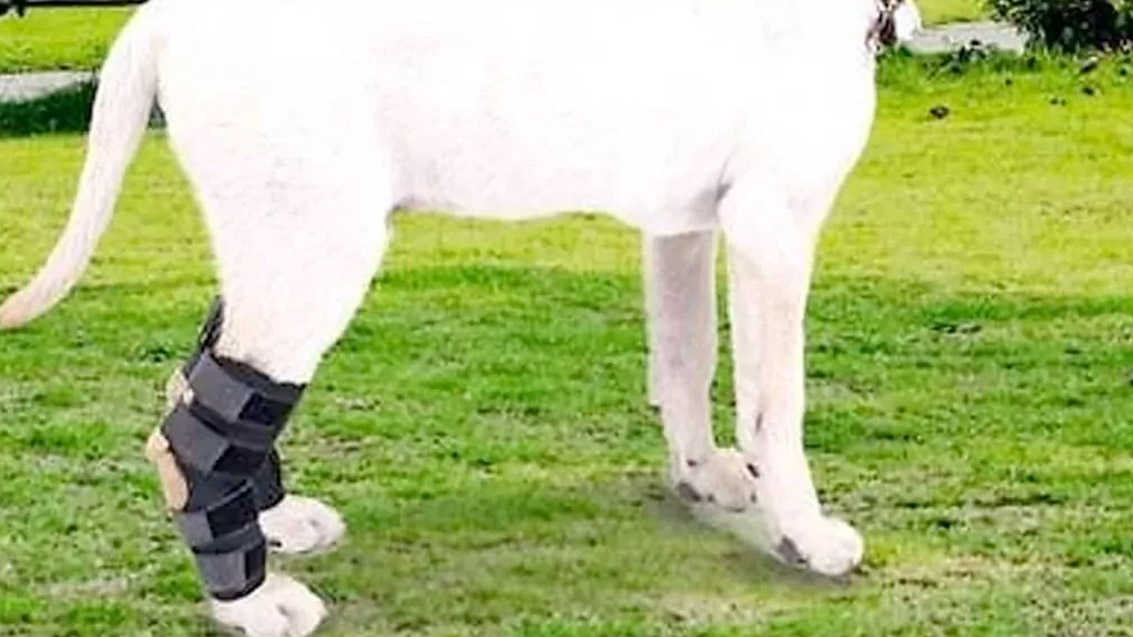Understanding ACL (Anterior Cruciate Ligament) Tears
The ACL is designed to keep the stifle (known as the knee when talking about humans) stable during flexion and extension.
For most pet owners, your dog is an important member of your family so it’s understandable that seeing them in any sort of pain can be distressing. Similar to humans, dogs can become injured despite our best efforts and it’s important that any such injuries are treated by a veterinarian to ensure your faithful companion is back to normal as soon as possible. The most common orthopaedic injury that your dog may sustain is an anterior cruciate ligament (ACL) tear – here is everything you need to know:
Our founder and surgeon, Dr Scot Plummer, says that many surgeons have suggested that dogs tear their ACLs due to their caudal sloping tibial plateau. He doesn’t believe that this is correct, as all dogs have a caudally sloping tibial plateau and this is likely the optimal angle for the femur to load through the tibia while a dog is sprinting (as, without the plateau, when the hind legs land between the forelegs, during running, we’d see momentum draw across the tibia and the posterior cruciate ligament, or PCL, fail as a result). Consider greyhounds – they hit 60km per hour within seconds of coming out of the gate, and yet they never tear their ACLs.
Instead, he points to actions that cause excessive changes in direction (such as ball fetching, fence running, and high-speed play – often with smaller dogs) along with excessive weight as the cause of ACL tears. Greyhounds and human runners and usually farm dogs and wild dogs, don’t tear ACL’s due to low body fat to wgt ratio and no engaging in any 180 degree change of direction, as against every human sport when change of direction is involved, we see some athletes tearing their ACL.
Many dog owners are concerned that, once one ACL has failed, the other won’t be far behind. With surgery on the affected ligament, along with weight loss and removal of activities that cause excessive change of direction, we find that failure of the other ACL occurs in as little as 10 to 20% of cases. If your dog doesn’t lose weight and continues to engage in excessive changes in direction, however, we generally see both failure of the other ACL and marked degenerative changes/arthritis of the surgery leg, in as little one to three years after surgery.
While it is not possible to completely prevent ACL tears from occurring, there are things you can do to minimise the risk for your dog. This includes giving your dog ample inside time (particularly when they’d be unsupervised, such as when you’re at work or asleep), as this prevents bird chasing during the day, possum chasing at night, and fence running with neighbouring dogs – all of which are activities that involve excessive changes in direction. Weight is extremely important. Fat adds to load, not to ability to move and almost every dog we see with an ACL tear is overweight. Size is the not the issue, it’s body fat levels. We see ACL tears in 3kg dogs and 80kg dogs and in almost all cases, excessive weight is a contributing factor.
In short, yes. Fetching leads to massive loads through the stifle, as returning with the thrown object causes your dog to perform a 180-degree change in direction. Wild and farm dogs generally do not tear their ACLs, as they don’t fetch and have low body fat levels. Still not convinced? Run to your back fence, turn and run back – do that 20 times in a row, then repeat daily for a month. How are your knees feeling after all that?
If you must play fetch with your dog, doing so in water is the only safe way to do it. This is because dogs don’t load their stifle when turning while swimming.
If you must run with your dog, doing so on an oval is preferred, as grass is impact absorbing. Running and playing in water, even on hot days, is also okay, as the contact between the water and your dog’s skin helps to remove the heat their bodies are generating.
Keep in mind that walking is all dogs really need. It protects their ACLs from injury, plus gives them time to do what they enjoy most – sniffing and examining everything! If your dog is walking beside or behind you on a walk, you’ve gone too far and they’re tired – dogs should always be in front. As they age, many dogs will no longer want to go for a walk. Instead, they’ll be happy to observe the world from home.
There is an estimated 50 to 100,000 instances of ACL tears in dogs here in Australia each year, which just goes to show how common this preventable injury is. Unfortunately, most dog owners are not educated on what causes these tears or how they can be prevented (we cynically believe this is because surgeons generate more revenue by not passing this information on). Understanding these tears in greater detail will go a long way to keeping your four-legged friend in tiptop health.
